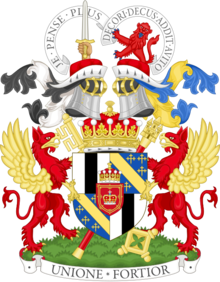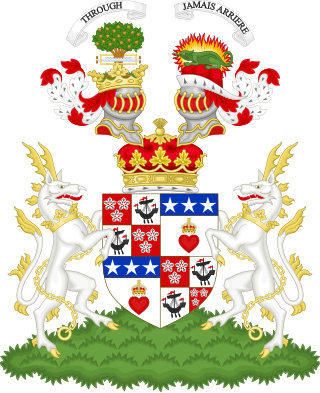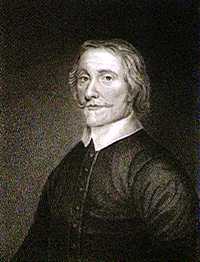| Earls of Mar (1st creation), 1404 |
|
Robert Erskine
(d. 1452)
13th Earl of Mar, 1st Lord Erskine |
|
| | | |
|
Thomas Erskine
(d. 1493)
14th Earl of Mar, 2nd Lord Erskine |
|
| | | |
|
Alexander Erskine
(d. 1509)
15th Earl of Mar, 3rd Lord Erskine | | | | | | | | | | James II
(1430–1460)
King of Scots |
|
| | | | | | | | | | | | | | | | | | | | | | | | | |
| | | | | | | | | |
| | | | | | | | | | | | | | | | | | Earl of Mar (4th creation) and Earl of Garioch, 1483 | | Earl of Mar (3rd creation) and Earl of Garioch, 1459 |
|
Robert Erskine
(d. 1513)
16th Earl of Mar, 4th Lord Erskine | | | | | | | | | | James III
(1451/1452–1488)
King of Scots | | Alexander Stewart
(c. 1454–1485)
Duke of Albany, Earl of March, Earl of Mar and Garioch | | John Stewart
(c. 1456–c. 1479)
Earl of Mar and Garioch |
|
| | | | | | | | | | | | | | | | | | | | | |
| | | | |
| | | | | | | | | | | | | | | | | | Earl of Mar (5th creation) and Earl of Garioch, 1486 |
|
John Erskine
(1487–1555)
17th Earl of Mar, 5th Lord Erskine | | | | | | | | | | James IV
(1473–1513)
King of Scots | | John Stewart
(1479–1503)
Earl of Mar and Garioch |
|
| | | | | | | | | | | | | | | | | |
| | | | | | | | | |
| Earl of Mar (7th creation), 1565 | | | | | | | | | | | | | | | |
|
John Erskine
(d. 1572)
18th Earl of Mar (1st creation), 1st Earl of Mar (7th creation), 6th Lord Erskine | | Alexander Erskine of Gogar
(d. aft. 1592) | | Margaret Erskine
(1515–1572) | | James V
(1512–1542)
King of Scots |
| |
| | | | | | | | | | | | | | | | | | |
| | |
| | | | | Baron Erskine of Dirletowne (1604), Viscount of Fentoun (1606), Earl of Kellie, Lord Dirletoun, and Viscount of Fentoun (1619) | | | | | | Earl of Mar and Garioch (6th creation), 1562 |
|
John Erskine
(1558–1634)
19th Earl of Mar (1st creation), 2nd Earl of Mar (7th creation) | | Thomas Erskine
(1566–1639)
1st Earl of Kellie, 1st Viscount of Fentoun (1606 & 1619), 1st Baron Erskine of Dirletowne, 1st Lord Dirletoun | | | | | | James Stewart
(c. 1531–1570)
Earl of Mar and Garioch, 1st Earl of Moray, 1st Lord Abernethy, 1st Lord Strathdearn |
|
| | | | | | | | | | | | | | Earldom of Mar and Garioch extinct, 1570 |
|
John Erskine
(1585–1654)
20th Earl of Mar (1st creation), 3rd Earl of Mar (7th creation) | | Alexander Erskine
(d. 1633)
styled Viscount Fentoun |
|
| | | | | | | | | | | | | | | | | |
| | | | | | | | | |
| | | | | | | | | | | | | | | Baronet Erskine of Cambo, county Fife (Nova Scotia), 1666 |
|
John Erskine
(d. 1668)
21st Earl of Mar (1st creation), 4th Earl of Mar (7th creation) | | Thomas Erskine
(1615–1643)
2nd Earl of Kellie, 2nd Viscount of Fentoun (1606 & 1619), 2nd Baron Erskine of Dirletowne, 2nd Lord Dirletoun | | Alexander Erskine
(c. 1615–1639)
3rd Earl of Kellie, 3rd Viscount of Fentoun (1606 & 1619), 3rd Baron Erskine of Dirletowne, 3rd Lord Dirletoun | | Charles Erskine
(c. 1620–1677)
1st Baronet Erskine of Cambo |
|
| | | | | | | | | | | | | | | | | |
|
Charles Erskine
(1650–1689)
22nd Earl of Mar (1st creation), 5th Earl of Mar (7th creation) | | | | | | | | | | | Alexander Erskine
(1663–1727)
2nd Baronet Erskine of Cambo |
|
| | | | | | | | | | | | | | | | | | | | | | | | | | | | | | | |
| | | | | | | | | | | | | | | | | | | |
John Erskine
(1675–1732)
23rd Earl of Mar (1st creation), 6th Earl of Mar (7th creation) | | James Erskine
(1679–1754)
Lord Grange | | Alexander Erskine
(1677–1710)
4th Earl of Kellie, 4th Viscount of Fentoun (1606 & 1619), 4th Baron Erskine of Dirletowne, 4th Lord Dirletoun | | Charles Erskine
(1687–1753)
3rd Baronet Erskine of Cambo | | John Erskine
(1690–1754)
4th Baronet Erskine of Cambo | | David Erskine
(c. 1695–1769) | | William Erskine
(1695–1781)
5th Baronet Erskine of Cambo |
|
| Mar Earldom attainted, 1716 | | | | | | | | | | | | | | | | | | | | | | | | |
| | | | |
| | | | | | | | | | | | | | | | | | | | | | | | | | | |
| | | | |
| | | | | | | | | | | | | | | | | | | | | | | | | | | |
| | | | |
Thomas Erskine
(1705–1766)
styled Lord Erskine | | Lady Frances Erskine
(d. 1776) | | James Erskine
(d. 1785) | | Alexander Erskine
(d. 1756)
5th Earl of Kellie, 5th Viscount of Fentoun (1606 & 1619), 5th Baron Erskine of Dirletowne, 5th Lord Dirletoun | | | | | | | | | |
| |
| | | | | | | | | | | | | | | | | | | | | | | | | | | | | | | | | |
| | | | | | | | | | | | | | | | | | | | |
| | | | Mar Earldom attainder lifted by Act of Parliament, 1824 | | | | | | | | | | | | | | | | | | | | | | | | | |
|
| | | | John Francis Erskine
(1741–1825)
24th Earl of Mar (1st creation), 7th Earl of Mar (7th creation) | | Thomas Erskine
(1732–1781)
6th Earl of Kellie, 6th Viscount of Fentoun (1606 & 1619), 6th Baron Erskine of Dirletowne, 6th Lord Dirletoun | | Archibald Erskine
(1736–1797)
7th Earl of Kellie, 7th Viscount of Fentoun (1606 & 1619), 7th Baron Erskine of Dirletowne, 7th Lord Dirletoun | | Charles Erskine
(1730–1790)
6th Baronet Erskine of Cambo | | Thomas Erskine
(1736–1797)
9th Earl of Kellie, 9th Viscount of Fentoun (1606 & 1619), 9th Baron Erskine of Dirletowne, 9th Lord Dirletoun, 9th Baronet Erskine of Cambo | | Methven Erskine
(1736–1797)
10th Earl of Kellie, 10th Viscount of Fentoun (1606 & 1619), 10th Baron Erskine of Dirletowne, 10th Lord Dirletoun, 9th Baronet Erskine of Cambo |
|
| | | | | | | | | | | | | | | | | | | | | | | | | | | | | Baronetcy Erskine of Cambo extinct, 1797 |
| | | | | | | | | | | | | | | | | | |
John Thomas Erskine
(1772–1828)
25th Earl of Mar (1st creation), 8th Earl of Mar (7th creation) | | | | | | | | | | Henry Erskine
(1776–1846) | | William Erskine
(1759–1791)
7th Baronet Erskine of Cambo | | Charles Erskine
(1732–1781)
8th Earl of Kellie, 8th Viscount of Fentoun (1606 & 1619), 8th Baron Erskine of Dirletowne, 8th Lord Dirletoun, 8th Baronet Erskine of Cambo |
|
| | | | | | | | | | | | | | | | | |
| | | | |
John Francis Miller Erskine
(1795–1866)
26th Earl of Mar (1st creation), 9th Earl of Mar (7th creation), 11th Earl of Kellie, 11th Viscount of Fentoun (1606 & 1619), 11th Baron Erskine of Dirletowne, 11th Lord Dirletoun | | Frances Jemima Goodeve
(d. 1842) | | | | | | Walter Coningsby Erskine
(1810–1872)
10th Earl of Mar (7th creation), 12th Earl of Kellie, 12th Viscount of Fentoun (1606 & 1619), 12th Baron Erskine of Dirletowne, 12th Lord Dirletoun |
|
| | | | | | | | | | | | | | | | | | |
| | | | | | | | | |
Frances Jemima Goodeve
(1831–1887) | | | | | | John Francis Erskine Goodeve-Erskine
(1836–1930)
27th Earl of Mar (1st creation) | | Walter Henry Erskine
(1839–1888)
11th Earl of Mar (7th creation), 13th Earl of Kellie, 13th Viscount of Fentoun (1606 & 1619), 13th Baron Erskine of Dirletowne, 13th Lord Dirletoun |
|
| | | | | | | | | | | | | | | | | | |
| | | | |
Alice Young
(1858–1951) | | Charles Walter Young
(1862–1898) | | John Francis Hamilton Sinclair Cunliffe Brookes Forbes Goodeve-Erskine
(1868–1932)
28th Earl of Mar (1st creation) | | Walter John Francis Erskine
(1865–1955)
12th Earl of Mar (7th creation), 14th Earl of Kellie, 14th Viscount of Fentoun (1606 & 1619), 14th Baron Erskine of Dirletowne, 14th Lord Dirletoun |
|
| | | | | | | | | | | | | | | | | |
|
Charles Macdonald Lane
(1882–1956) | | Lionel Walter Erskine-Young
(1891–1965)
29th Earl of Mar (1st creation) | | | | | | John Erskine
(1895–1953)
styled Lord Erskine |
|
| | | | | | | | | | | | | | | | |
|
James Clifton Lane
(1914–1975)
30th Earl of Mar (1st creation) | | | | | | | | | | John Francis Hervey Erskine
(1921–1993)
13th Earl of Mar (7th creation), 15th Earl of Kellie, 15th Viscount of Fentoun (1606 & 1619), 15th Baron Erskine of Dirletowne, 15th Lord Dirletoun |
|
| | | | | | | | | | | | | | | | | |
| | | | |
Margaret Alison Lane
(b. 1940)
31st Countess of Mar (1st creation) | | David Charles of Mar
(1944–1967)
Lord Garioch | | | | | | James Thorne Erskine
(b. 1949)
14th Earl of Mar (7th creation), 16th Earl of Kellie, 16th Viscount of Fentoun (1606 & 1619), 16th Baron Erskine of Dirletowne, 16th Lord Dirletoun |
|
| | | | | | | | | | | | | | | |
|
Susan Helen of Mar
(b. 1963)
styled Mistress of Mar | | | | | | | | | | | | |
|
| Heir presumtive to the Earldom of Mar | | | | | | | | | | | | |
|









